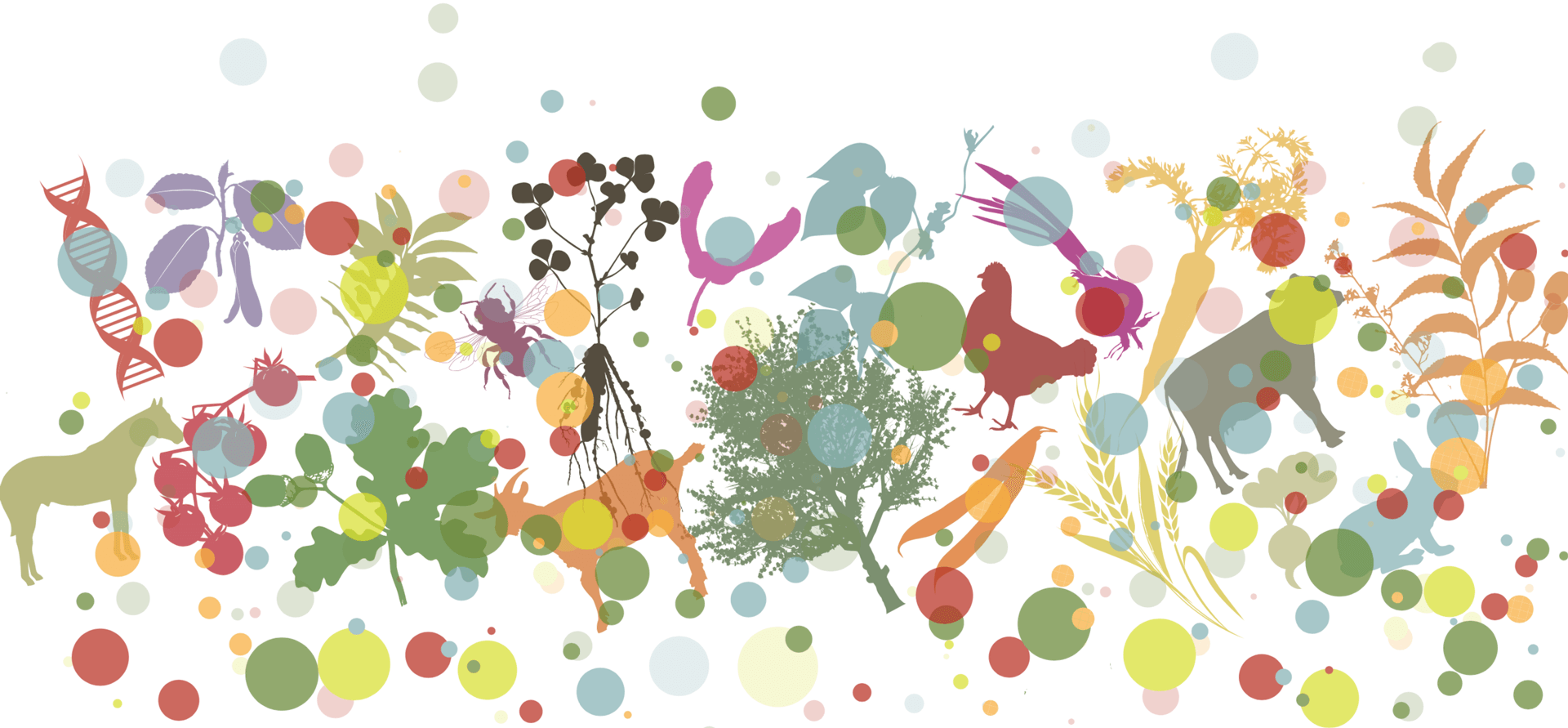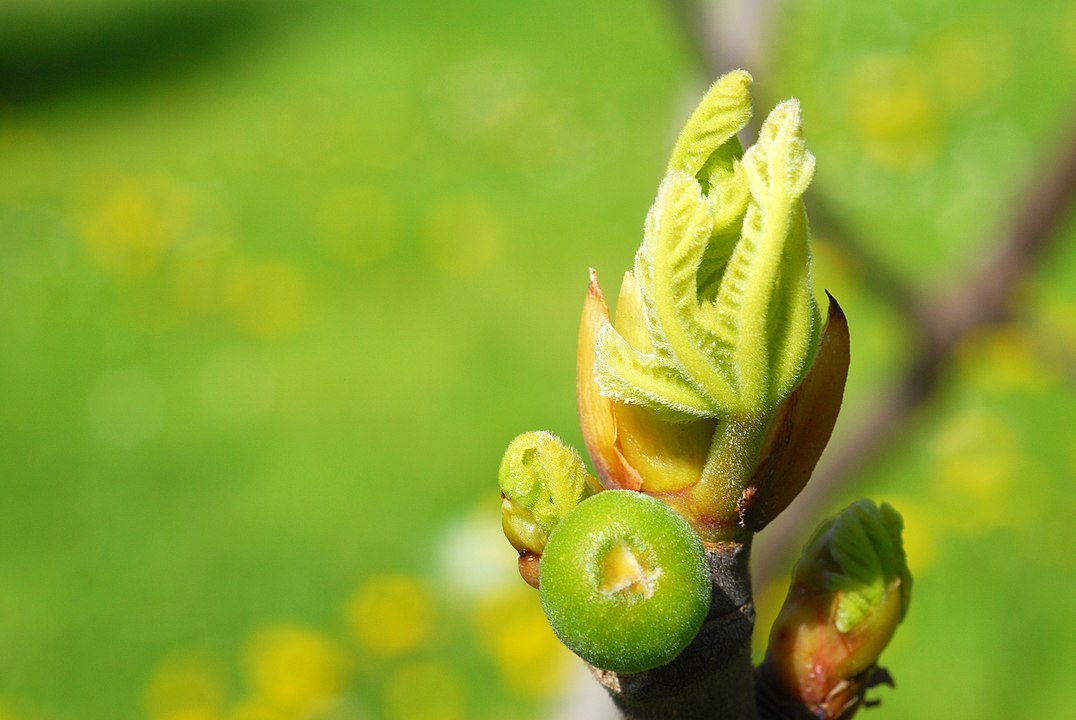Wild relatives of fruit trees in Syria: Genetic resources threatened by conflict
Main Article Content
Abstract
Wild relatives of fruit trees (WRFT) are highly valued for food and tradable products by rural communities, especially in low-income countries and as such are a vital resource for tree improvement. During periods of conflict, a lack of support and protection by national authorities may make WRFT vulnerable. In Syria, WRFT are at risk of extinction due to the ongoing crisis, which has limited efforts to conserve and propagate these unique genetic resources. We collected information about the current status and key threats to WRFT in northwest Syria from 50 agricultural experts using structured interviews. Our results show that many sites have experienced erosion, overgrazing and drought. To initiate in situ and ex situ conservation, the locations of WRFT exposed to deterioration were identified and mapped using GPS, and seeds from five genotypes per species were collected from each of ten species to be used for the establishment of an in situ and ex situ WRFT collection.
Article Details

This work is licensed under a Creative Commons Attribution 4.0 International License.
Authors retain copyright of the articles published in Genetic Resources and grant the journal right of first publication with open access. All articles published in Genetic Resource are licensed under Creative Commons Attribution 4.0 International License (CC BY 4.0) that allows others to download, share and adapt the work for commercial and non-commercial purposes as long as proper attribution to the original article is given. Genetic Resources permits and encourages authors to post items submitted to the journal (including the publisher's final layout) on personal websites or institutional repositories after acceptance and/or publication, while providing bibliographic details that credit their publication in Genetic Resources.
AlDarvish, M et al. (2022). “Survey and conservation of crop landraces in northwest Syria”. Genetic Resources 3(5), pp. 51–58. DOI: https://doi.org/10.46265/genresj.USTS1801. DOI: https://doi.org/10.46265/genresj.USTS1801
Ashok, N M Shakuntal, and B Gowda (2017). “Ultra-dry seed storage: A novel technology for enhancing seed longevity”. Int J Chem Stud 5(5), pp. 1851–1857. URL: https://www.chemijournal.com/archives/2017/vol5issue5/PartY/5-5-49-270.pdf.
Ayenan, M A T et al. (2019). “Accelerating Breeding for Heat Tolerance in Tomato (Solanum lycopersicum L.): An Integrated Approach”. Agronomy 9(11), pp. 720–720. DOI: https://doi.org/10.3390/agronomy9110720. DOI: https://doi.org/10.3390/agronomy9110720
Barone, E and T Caruso (1998). The Mediterranean agrobiodiversity wealth: an overview of minor fruit tree species. Report of the IPGRI Conference 9-11 February 1998 – ICARDA, Aleppo, Syria. URL: https://agris.fao.org/agris-search/search.do?recordID=QJ2002000084.
Bissessur, P et al. (2019). “Crop wild relative diversity and conservation planning in two isolated oceanic islands of a biodiversity hotspot (Mauritius and Rodrigues). (2019) Plant Genetic Resources; 1-11”. Plant Genetic Resources 2019(2), pp. 174–184. DOI: https://doi.org/10.1017/S1479262118000576.
Castañeda-Álvarez, N P et al. (2016). “Global conservation priorities for crop wild relatives”. Nat. Plants 2, p. 16022. DOI: https://doi.org/10.1038/nplants.2016.22. DOI: https://doi.org/10.1038/nplants.2016.22
Dempewolf, H et al. (2013). “Adapting agriculture to climate change: a global initiative to collect, conserve, and use crop wild relatives”. Agroecol. Sust. Food 38, pp. 369–377. DOI: https://doi.org/10.1080/21683565.2013.870629. DOI: https://doi.org/10.1080/21683565.2013.870629
Engels, J M M and I Thormann (2020). “Main Challenges and Actions Needed to Improve Conservation and Sustainable Use of Our Crop Wild Relatives”. Plants 9(8), p. 968. DOI: https://doi.org/10.3390/plants9080968. DOI: https://doi.org/10.3390/plants9080968
Erci¸sli, S, M Güleryüz, et al. (2009). “The Use of Wild Edible Fruits in Sustainable Fruit Production in Turkey”. In: 1st International Symposium on Sustainable Development. url: https://www.researchgate.net/publication/277103891_The_Use_of_Wild_Edible_Fruits_in_Sustainable_Fruit_Production_in_Turkey.
Erci¸sli, S and H I Sagbas (2017). “Wild Edible Fruits: A Rich Source of Biodiversity”. ANADOLU, J. of AARI 27(2), pp. 116–122. URL: https://arastirma.tarimorman.gov.tr/etae/Belgeler/AnadoluDergisi/2017/2/15%20mak%20116-122.pdf.
Eyzaguirre, P, S Padulosi, and T Hodgkin (1998). “IPGRI’s strategy for neglected and underutilized species and the human dimension of agrobiodiversity”. In: Priority Setting for underutilized and neglected plant species of the Mediterranean region. Report of the IPGRI Conference, 9-11 February 1998, ICARDA, Aleppo, Syria. Ed. by S Padulosi. Rome, Italy: International Plant Genetic Resources Institute, pp. 1–20.
FAO (1996). Syria: Country Report to the FAO International Technical Conference on Plant Genetic Resources. International Technical Conference on Plant Genetic Resources, Leipzig, Germany, 17-23 June 1996. URL: https://www.fao.org/fileadmin/templates/agphome/documents/PGR/SoW1/east/SYRIANAR.PDF.
FAO(2003). “Agro-ecological zones and farming systems”. In: Fertilizer Use by Crop in the Syrian Arab Republic. Rome: Food and Agriculture Organization of the United Nations. URL: http://www.fao.org/3/Y4732E/y4732e06.htm.
FAO (2015). National Strategy for Conservation and Management of Plant Genetic Resources for Food and Agriculture in Lebanon 2015–2035. Food and Agriculture Organization of the United Nations, Ministry of Agriculture. URL: https://faolex.fao.org/docs/pdf/leb169447.pdf.
FAO, IFAD and WFP (2015). The State of Food Insecurity in the World 2015. Meeting the 2015 international hunger targets: taking stock of uneven progress. Rome: FAO. URL: https://www.fao.org/documents/card/en/c/c2cda20d-ebeb-4467-8a94-038087fe0f6e. DOI: https://doi.org/10.3945/an.115.009936
Gaafar, R (2021). The Environmental Impact of Syria’s Conflict: A Preliminary Survey of Issues. URL: https://ceobs.org/ari-the-environmental-impact-of-syrias-conflict-a-preliminary-survey-of-issues/.
Godfray, H C J et al. (2010). “Food security: the challenge of feeding 9 billion people”. Science 327, pp. 812–818. DOI: https://doi.org/10.1126/science.1185383. DOI: https://doi.org/10.1126/science.1185383
Iriondo, J M et al. (2012). “Quality standards for genetic reserve conservation of crop wild relatives”. In: Agrobiodiversity conservation: securing the diversity of crop wild relatives and landraces. Ed. by N Maxted et al. CABI, pp. 72–77. DOI: https://www.cabidigitallibrary.org/doi/10.1079/9781845938512.0072. DOI: https://doi.org/10.1079/9781845938512.0072
Khoury, C K et al. (2017). “Conservation priorities for tree crop wild relatives in the United States”. In: Proceedings of Workshop on Gene Conservation of Tree Species-Banking on the Future.
Maxted, N and S Kell (2009). Establishment of a Global Network for the In Situ Conservation of Crop Wild Relatives: Status and Needs. Rome: Commission on Genetic Resources for Food and Agriculture, FAO. URL: https://www.fao.org/3/i1500e/i1500e18a.pdf.
McCouch, S et al. (2013). “Feeding the future”. Nature 499, pp. 23–24. DOI: https://doi.org/10.1038/499023a. DOI: https://doi.org/10.1038/499023a
Migicovsky, Z and S Myles (2017). “Exploiting Wild Relatives for Genomics-assisted Breeding of Perennial Crops”. Front. Plant Sci 8, pp. 460–460. DOI: https://doi.org/10.3389/fpls.2017.0046. DOI: https://doi.org/10.3389/fpls.2017.00460
Mishra, S, S Chowrasia, and T K Mondal (2022). “Dhani (Oryza coarctata): A Wild Relative of Rice is a Potential Source of Coastal Salinity Tolerance Genes Suitable for Rice Breeding”. In: Transforming Coastal Zone for Sustainable Food and Income Security. Ed. by T Lama et al. Cham: Springer. DOI: https://doi.org/10.1007/978-3-030-95618-9_2. DOI: https://doi.org/10.1007/978-3-030-95618-9_2
MSEA (2009). The fourth national report on biodiversity in the Syrian Arab Republic. URL: https://www.cbd.int/doc/world/sy/sy-nr-04-en.pdf.
Musayev, M and T Huseynova (2016). “Collection, study and use of crop wild relatives of fruit plants in Azerbaijan”. International Journal of Minor Fruits, Medicinal and Aromatic Plants 2(2). URL: https://www.ijmfmap.in/pdf_vol2_2/vol_2_2_2.pdf.
Otieno, E (2017). “Wild edible indigenous fruit tree species in East Africa’s drylands: A coping mechanism for vulnerable farmers and pastoralists against drought and hunger. ” MITI Magazine(35). URL: https://www.researchgate.net/publication/345804108_Wild_edible_indigenous_fruit_tree_species_in_East_Africa’s_drylands_A_coping_mechanism_for_vulnerable_farmers_nd_pastoralists_against_drought_and_hunger.
Paudel, M N, B K Joshi, and K H Ghimire (2016). “Management Status of Agricultural Plant Genetic Resources in Nepal”. Agronomy Journal of Nepal 4, pp. 75–91. DOI: https://doi.org/10.3126/ajn.v4i0.15517. DOI: https://doi.org/10.3126/ajn.v4i0.15517
Pilling, D et al. (2020). “Global status of genetic resources for food and agriculture: challenges and research needs: Global status of genetic resources for food and agriculture”. Genetic Resources 1(1), pp. 4–16. DOI: https://doi.org/10.46265/genresj.2020.1.4-16. DOI: https://doi.org/10.46265/genresj.2020.1.4-16
Spiegel-Roy, P (1986). “Domestication of Fruit Trees”. Developments in Agricultural and Managed Forest Ecology 16, pp. 201–211. URL: https://www.sciencedirect.com/science/article/abs/pii/B9780444427038500178. DOI: https://doi.org/10.1016/B978-0-444-42703-8.50017-8
Symphorien, A et al. (2016). “Ecological diversity and conservation of wild edible fruit trees species in the Lama Forest Reserve in Benin”. Bois et Forets des Tropiques 329(3), pp. 53–65. DOI: http://dx.doi.org/10.19182/bft2016.329.a31312. DOI: https://doi.org/10.19182/bft2016.329.a31312
Ug˘ur, R and M A Günde¸sli (2020). “Investigation of propagation with hardwood cutting in different Prunus species”. Int J Agric For Life Sci 4(2), pp. 189–189. URL: https://dergipark.org.tr/en/download/article-file/1246751.
UN DESA (2015). World Population Prospects: The 2015 Revision, Key Findings and Advance Tables. Working Paper No. ESA/P/WP.241. New York: United Nations, Department of Economic and Social Affairs, Population Division. URL: https://population.un.org/wpp/publications/files/key_findings_wpp_2015.pdf.
Upadhaya, K, H N Pandey, and L Pynsakhiat (2007). “The Effect of Seed Mass on Germination, Seedling Survival and Growth in Prunus jenkinsii Hook.f. & Thoms”. Turkish Journal of Botany 31(1). URL: https://journals.tubitak.gov.tr/botany/vol31/iss1/4.
Valderrabano, M et al. (2018). Conserving Wild Plants in the South and East Mediterranean Region. IUCN, International Union for Conservation of Nature. DOI: https://doi.org/10.2305/IUCN.CH.2018.21.en. DOI: https://doi.org/10.2305/IUCN.CH.2018.21.en
Vincent, H et al. (2019). “Modeling of crop wild relative species identifies areas globally for in situ conservation”. Commun Biol 2(136). DOI: https://doi.org/10.1038/s42003-019-0372-z. DOI: https://doi.org/10.1038/s42003-019-0372-z
Weibull, J and J Phillips (2020). “Swedish Crop Wild Relatives: towards a national strategy for in situ conservation of CWR”. Genetic Resources 1(1), pp. 17–23. DOI: https://doi.org/10.46265/genresj.2020.1.17-24 DOI: https://doi.org/10.46265/genresj.2020.1.17-24
Wolf, H et al. (2000). “Conservation and breeding of wild fruit tree species in forestry”. Acta Hortic 538, pp. 57–62. DOI: https://doi.org/10.17660/ActaHortic.2000.538.4. DOI: https://doi.org/10.17660/ActaHortic.2000.538.4
Yoshinaga, A (2010). Guidelines For Successful Seed Storage. Revised April 2010. Center for Conservation Research and Training, pp. 1–9. URL: https://www.ctahr.hawaii.edu/ougc/downloads/Guidelines_for_Storage.pdf.
Zhebentyayeva, T et al. (2019). “Genetic characterization of worldwide Prunus domestica (plum) germplasm using sequence-based genotyping”. Horticulture Research 6, pp. 12–12. DOI: https://doi.org/10.1038/s41438-018-0090-6. DOI: https://doi.org/10.1038/s41438-018-0090-6







 This journal has been conceived as part of the
This journal has been conceived as part of the